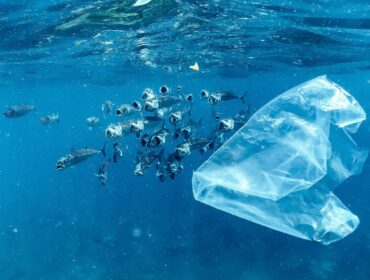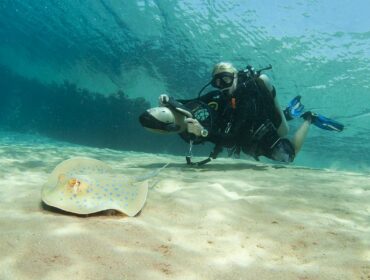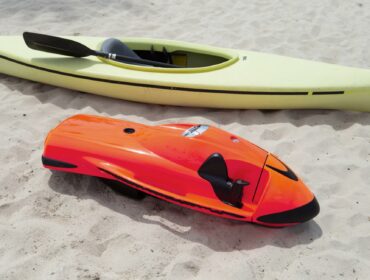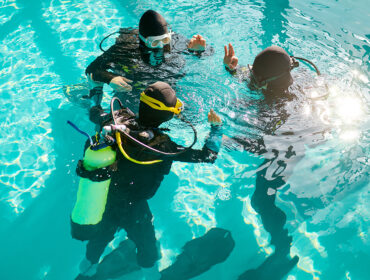What is a DPV or Diver Propulsion Vehicle?
A diver propulsion vehicle (DPV, also known as an underwater propulsion vehicle or underwater scooter) is an item of diving equipment scuba divers use to increase their range underwater. A DPV usually consists of a battery-powered electric motor, which drives a propeller. These machines are designed to provide divers with greater mobility and less air consumption, giving them more bottom time (within tables) and far greater range.
Why do a specialty course in Diver Propulsion Vehicles?
The PADI Diver Propulsion Vehicle (DPV) Specialty is one of the most fun specialties to participate in. While initially used only by technical divers and the military, DPVs are rapidly gaining popularity in the recreational diving sphere. DPVs offer a thrilling way to cover a lot of underwater territory in a brief time. They cut down the need for the diver to exert himself by kicking or finning. However, using a DPV requires some amount of mastery as the DPV can make buoyancy control difficult and cause barotrauma if the diver ascends or descends under power. This course is designed to introduce divers to the skills and excitement of using diver propulsion vehicles. Also, familiarize student divers with the knowledge, planning, organization, procedures, techniques, potential problems, and hazards of using DPVs.
What does the Course cover?
The PADI DPV Speciality is conducted over one evening of theory and pool practice and then two dives in Open Water. The first dive allows divers to practice basic vehicle handling skills and the second dive prompts divers to plan and execute a typical DPV dive.
The course covers the following:
- The planning, organization, procedures, techniques, problems, and hazards of diving with an underwater propulsion vehicle.
- Equipment considerations include but are not limited to battery care, maintenance, and precautions.
- Proper procedures are needed to determine a turnaround point, vehicle failure, runaway motor, descents, and ascents and avoid propeller entanglements.
- Techniques to avoid harming fragile aquatic life.
- Techniques for entering and exiting the water with a DPV.
Prerequisites to do the Course
To qualify for the DPV Specialty course, an individual must:
- Be certified as a PADI Open Water Diver, PADI Junior Open Water Diver or have a qualifying certification from another training organization.
- Be 12 years of age or older.





